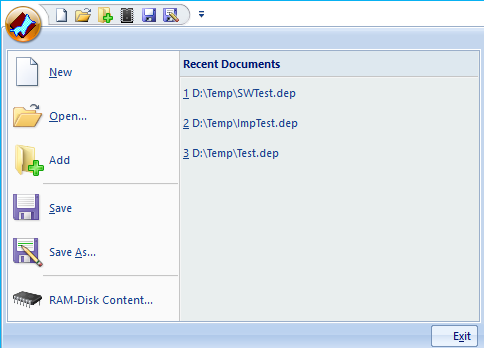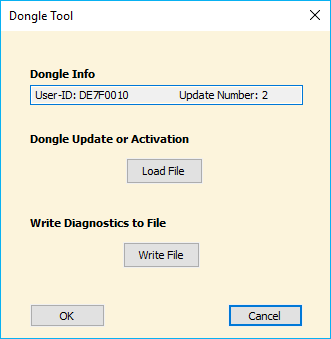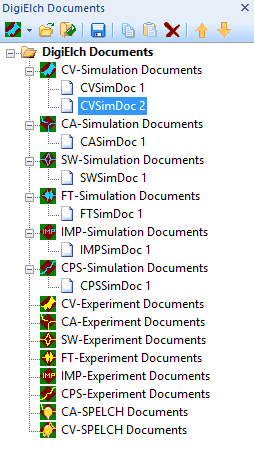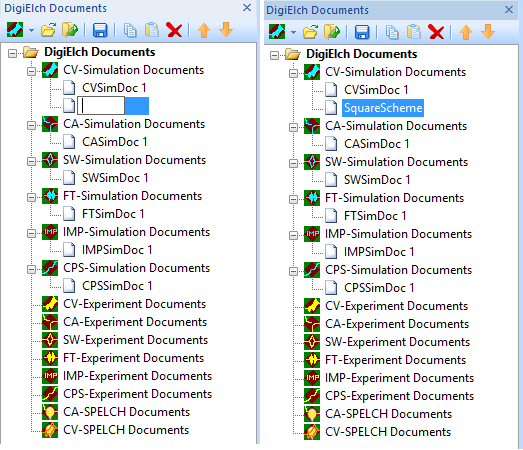
DigiElch Windows and Menus
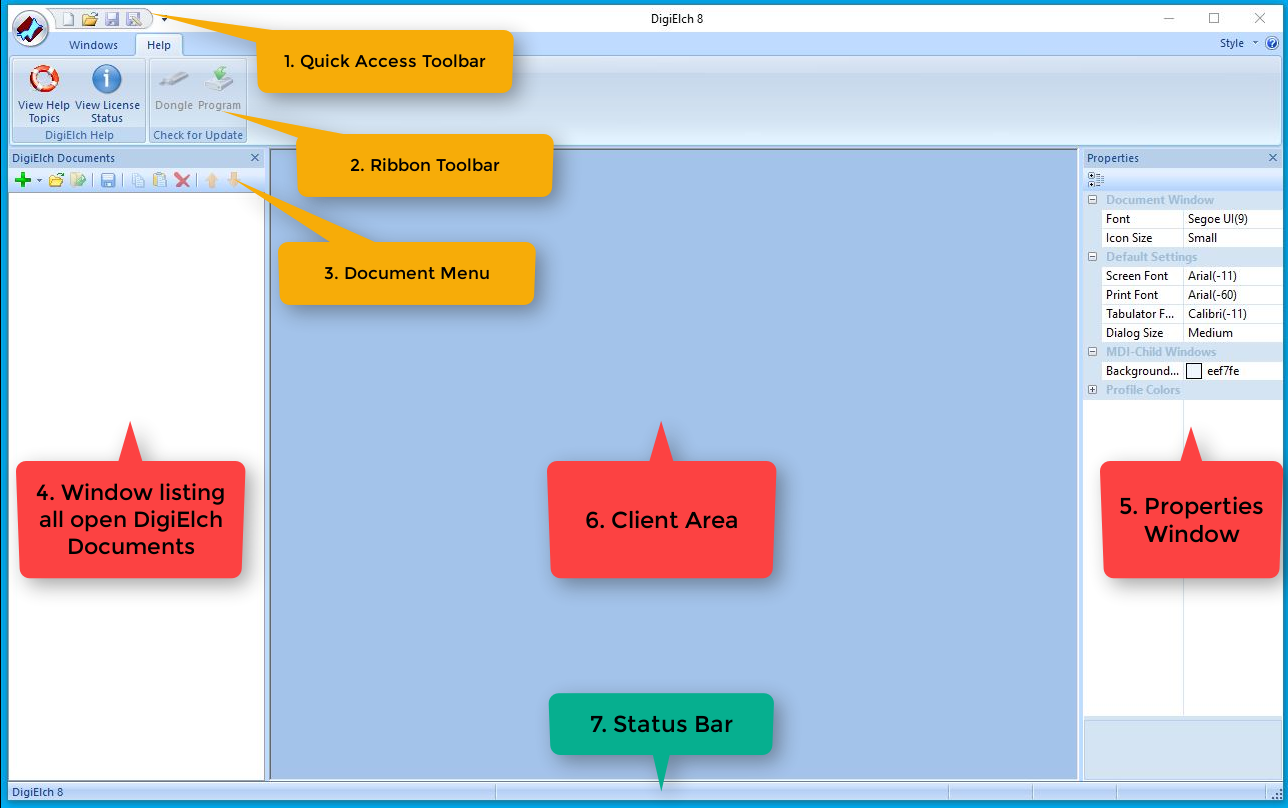
The ribbon toolbar contains DigiElch's main menu. The associated menu commands (and their functionality) depend on the document type (electrochemical method) selected in the DigiElch Documents window and on the simulation data (current curve, concentration profiles, surface concentrations) shown in the Client Area of the main window. For this reason only the invariant Menu Windows and Menu Help are described here.
Menu: Windows
•Docking Windows ➢Check Box: Show Status Bar ➢Check Box: Show DigiElch Documents ➢Check Box: Show Properties ➢Check Box: Simulation ➢Check Box: C-Profiles ➢Check Box: Surface Concentrations ➢Check Box: Experiments ➢Check Box: Data Fitting ➢Check Box: Chi²-Tests ➢Check Box: Compare Curves ➢Check Box: Plot Graph ➢Check Box: Comment
Menu: Help
•Command: Web Help •Command: Local Help •Command: View License Status •Command: Check for Update -> Program •Command: Check for Update -> Dongle
It enables the user to activate or upgrade the dongle using a file received by e-mail or to write a diagnostic file that can be sent to ElchSoft in the case of a dongle failure.
|
The menu bar on the top of the DigiElch Documents window provides commands for creating, opening, saving, copying and pasting native DigiElch 8 simulation documents. It also enables the user to load documents created by previous versions of DigiElch.
Menu Commands:
•Command: Open
•Command: Load
•Command: Save •Command: Copy •Command: Paste •Command: Delete •Command: Up/Down |
This windows shows a listing of all simulation documents which have been created or opened in the actual DigiElch project. Immediately after starting the program this list is empty. The number of documents which can be opened and handled in a project is limited only by the RAM configuration of the computer.
After executing the command Add New Document several times the list of simulation documents in the DigiElch Documents window may look as follows:
The name of the active (selected) document is written on a blue background. It is the document to which the menu commands in the Ribbon Toolbar and the commands Save, Copy and Delete in the Document Menu refer. The simulations or experiments referring to the active document are displayed in the Client Area of the main window. The default name given to a document can be modified as shown in the following picture.
|
This window on the right-hand side shows information referring to the active simulation/experiment and/or provides options for customizing colors, printing, data export and screen display. The following options are available immediately after starting DigiElch or after removing all open documents from the list of DigiElch Documents
Option: Document Windows ➢Font ➢Icon Size Option: Default Settings ➢Screen Font ➢Print Font ➢Tabulator Font ➢Dialog Size Option: MDI-Child Windows ➢Background Color Option: Profile Colors
|
This area is empty immediately after starting the program. After adding a new DigiElch Document or opening an existing one, this area contains a tabbed window showing several aspects of simulation results
Tabbed Windows:
1.Simulations 2.C-Profiles 3.Surface Concentrations 4.Experiments 5.Data Fitting 6.Chi² -Tests 7.Compare Curves 8.Plot Graph 9.Comment |
The name or path of the DigiElch project file is plotted in the left most part of the Status Bar. The info shown in the remaining part depends on which type of DigiElch document and Tab-Window is currently activated. |
During the download of the video clip the scrolling of this page may be disabled!



